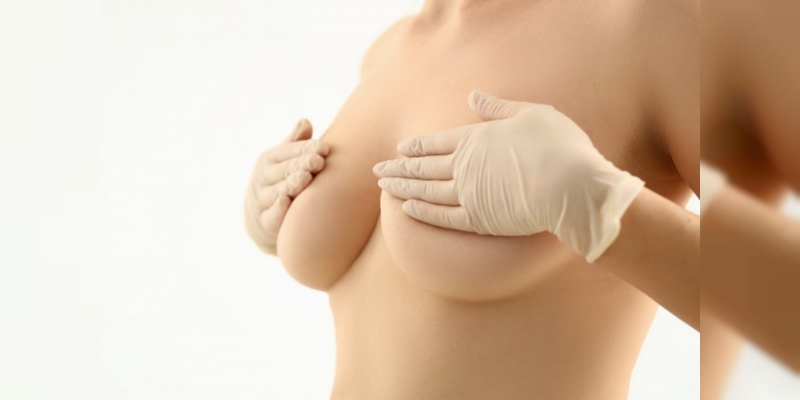To receive detailed information about our procedures and to schedule an appointment, please fill out the form below.
Many women consider undergoing breast augmentation surgery. In some cases, breast development is completely insufficient or less than desired. Some feel that their breasts have always been very small, while others are concerned about changes after pregnancy, weight loss, or aging. Regardless of the reason for considering breast augmentation, the most important point is that the decision should be made solely by you. This procedure should not be considered to please someone else. Additionally, as with all aesthetic surgeries, it is important to remember that these procedures alter the shape of the body but do not fundamentally change your life.

Breast augmentation forms a well-defined group of surgical procedures. Over the past 30 years, more than three million women worldwide have undergone this surgery. Most importantly, the majority of these women are satisfied with the results of the procedure.
With implants, your breasts can be enlarged and corrected. They are also used in cases of sagging, though an additional lifting procedure, called mastopexy, may be necessary. For this application, you can refer to the breast lift section on our website.
The implants used in breast augmentation are either filled with silicone or saline (sometimes saltwater). Each type has its advantages and disadvantages. Briefly:
For years, the media and press have exaggerated questions about the safety of silicone implants. You should discuss any concerns you have with your doctor during consultation.
A successful breast augmentation begins with careful planning to meet your specific desires. Many decisions must be made: the first is choosing between saline or silicone implants, as explained above.
The second is choosing between round or anatomical (teardrop-shaped) implants. The goal is to provide the most natural-looking breast possible.
Some people feel that round implants create an unnatural upper fullness, while in some cases this is true. However, if you have sufficient breast tissue and are considering moderate augmentation, this issue does not usually occur. For thin individuals with little breast tissue covering the implant, anatomical implants appear more natural.
For those seeking very large breast augmentation, regardless of implant type, achieving a natural look can be difficult, and wrinkling on the sides of the breast may occur, known as traction rippling.
Implant size must also be discussed, as the same implant may look different on two women depending on body type. Your doctor will help guide you in choosing a size that creates a natural and attractive breast appearance.
Other topics for discussion with your doctor include placing the implant under the breast tissue or under the pectoral muscle and choosing the incision site. Submuscular silicone implant placement often provides natural results with minimized risk and is frequently preferred. For a natural and attractive appearance, a dual-plane technique—placing the upper part under the breast tissue and the lower part under the muscle—has been used for years with satisfying outcomes.
Finally, your doctor will discuss the risks and what to expect during recovery.
There are three main approaches for breast augmentation:
Regardless of technique, the procedure is performed under general anesthesia. For the first method, an incision is made under the breast, and a pocket is created under the breast tissue or pectoral muscle. Small bleeding points are controlled, and the implant is placed. The incision is closed with absorbable materials under the skin, and a supportive bra or bandage is applied. You will need to bring the supportive bra for your follow-up appointment 5–7 days later, which should be worn day and night (except during bathing) for approximately six weeks.
Mild tenderness and swelling for a few days after surgery are normal. Some guidelines will be given during this period.
After general anesthesia, mild nausea may occur, which can be controlled with prescribed medications. No oral intake is allowed for the first four hours, but sipping water will help normalize the process. Nurses will assist with care during this period.
The supportive bra should not be removed during the first week unless instructed by your doctor. Special tapes may be used to aid scar healing. Medications should be taken as prescribed, and arm movements may be restricted as advised.
Hematoma (blood collection under breast tissue) may occur in the first 24 hours, so early arm movements should be limited.
You can usually go home the same day, though it is advisable to have someone accompany you for the first 24 hours.
Early postoperative precautions:
Most common complication: Capsular contracture, where scar tissue around the implant tightens, making it feel firm and noticeable. Modern textured implants greatly reduce this risk. The exact cause of capsular contracture is not fully understood.

Specialist in Aesthetic, Plastic, and Reconstructive Surgery
To receive detailed information about our procedures and to schedule an appointment, please fill out the form below.
You can send us an email or reach us by phone for more information.
Assoc. Prof. Dr. Beşir Öztürk, Specialist in Aesthetic, Plastic, and Reconstructive Surgery, combines the latest surgical techniques with years of experience to achieve natural, balanced, and aesthetic results.
Each procedure is carefully planned to reflect the best version of you and help you rediscover yourself.